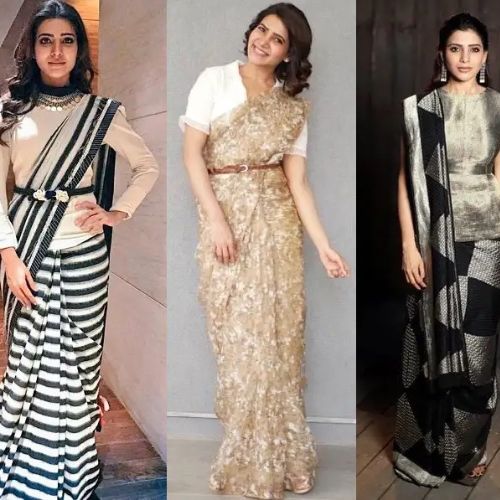
Introduction to Fashion Weeks and their Purpose
Fashion weeks, also known as fashion shows or style weeks, are highly anticipated events in the fashion industry that showcase the latest trends and styles from top designers. These events are held twice a year in major fashion capitals such as New York, Paris, London, and Milan. They serve as a platform for designers to present their collections to an audience of buyers, press, influencers, and celebrities.
The History of Fashion Weeks
The concept of fashion weeks originated in Paris in the mid-19th century when Charles Frederick Worth, considered the father of haute couture, organized a private show for his clients. In 1943, Eleanor Lambert created "Press Week" in New York City to showcase American designers amidst World War II fabric restrictions. This evolved into what is now known as New York Fashion Week.
Over time, other major cities joined in on this trend with their own fashion weeks. Today, there are over 100 official fashion weeks held all over the world every year.
Purpose of Fashion Weeks
Fashion weeks have become an integral part of the fashion industry and serve multiple purposes for both designers and consumers:
1. Showcasing Latest Trends: The primary purpose of fashion weeks is to unveil the latest collections from top designers for upcoming seasons. It allows buyers and retailers to see what will be popular among consumers and place orders accordingly.
2. Networking Opportunities: Fashion weeks bring together various professionals from the industry – models, photographers, stylists – creating numerous networking
History of Fashion Weeks and its Evolution
The concept of fashion weeks can be traced back to the 19th century, when Parisian fashion houses started organizing private shows for their elite clientele. However, it was not until the early 20th century that these shows became more accessible to the general public and evolved into what we now know as fashion weeks.
The first official fashion week event is believed to have taken place in New York City in 1943, during World War II. The purpose of this event, called "Press Week", was to showcase American designers and promote their creations as an alternative to European fashion which was difficult to obtain due to the war. This marked a turning point in the industry as it shifted focus from individual designers to showcasing entire collections and promoting them on a larger scale.
In Europe, specifically in Paris, the idea of organized fashion shows gained popularity after World War II ended. In 1945, French designer Christian Dior launched his first collection and introduced the iconic "New Look" silhouette which revolutionized women's fashion at that time. The success of this collection led Dior’s house manager Lucien Lelong to organize a "Fashion Parade" featuring other French designers such as Pierre Balmain and Jacques Fath. This event became known as “Paris Fashion Week” and set the standard for future events around the world.
The Impact of Fashion Weeks on the Industry
Fashion Weeks are highly anticipated events in the fashion industry, where designers, models, and influencers come together to showcase the latest trends and styles for the upcoming season. These events not only generate buzz and excitement among fashion enthusiasts but also have a significant impact on the industry as a whole. In this section, we will discuss the various ways in which Fashion Weeks influence and shape the fashion world.
1. Setting Trends:
One of the most prominent impacts of Fashion Weeks is setting trends for upcoming seasons. The collections presented by designers during these events serve as inspiration for other brands, retailers, and consumers. The new designs, colors, textures, and silhouettes showcased on the runway often become must-have items for fashion-forward individuals. This sets off a chain reaction in the industry, with retailers stocking up on these trendsetting pieces to meet consumer demand.
2. Shaping Consumer Behavior:
Fashion Weeks also have a significant impact on consumer behavior. The coverage of these events by media outlets creates excitement and desire among consumers to own the latest styles seen on the runway. This can lead to increased sales for luxury brands as well as fast-fashion retailers who replicate designer looks at more affordable prices. Furthermore, social media plays a crucial role in spreading images from Fashion Week shows globally, influencing consumer purchasing decisions.
3. Boosting Brand Visibility:
For emerging designers or smaller brands trying to make their mark in an oversaturated market, participating in Fashion Weeks can be a game-changer. These events provide an excellent platform for them.

The Evolution of Fashion Weeks in the Digital Age
The fashion industry has always been known for its ever-evolving nature, constantly adapting to new trends and styles. And just like the fashion itself, the way it is showcased has also undergone tremendous changes over the years. In recent times, one of the biggest shifts in the fashion world has been the incorporation of technology in every aspect of the industry. From virtual runway shows to live streaming events, technology has revolutionized fashion weeks and how they are experienced by both designers and audiences.
Fashion weeks have long been considered as one of the most important events in the fashion calendar, where designers present their latest collections on a grand stage to buyers, media, and celebrities.
The first-ever digital fashion week can be traced back to 2001 when Alexander McQueen live-streamed his show online. It was a groundbreaking move that paved the way for other designers to follow suit. However, it wasn’t until recently that technology truly transformed how we experience fashion weeks.
One of the major changes brought about by technology is accessibility. With physical attendance at these events being limited to celebrities and industry insiders, only a select few were able to witness these glamorous showcases firsthand. But with live streaming becoming more prevalent in recent years, anyone with an internet connection can now tune into these shows from anywhere in the world.
Coclusion
Fashion Weeks have been a cornerstone of the fashion industry for decades, and their enduring impact on the industry cannot be denied. These bi-annual events bring together designers, buyers, influencers, and fashion enthusiasts from all over the world to showcase the latest collections and set trends for the upcoming seasons.
One of the key ways in which Fashion Weeks shape upcoming trends is through setting the tone for what is considered fashionable. The runway shows at these events feature highly curated collections that reflect not just individual designer styles, but also overarching themes and concepts that are deemed trendy by industry insiders. From color palettes to silhouettes, these shows dictate what will be seen as fashionable in the months ahead.


